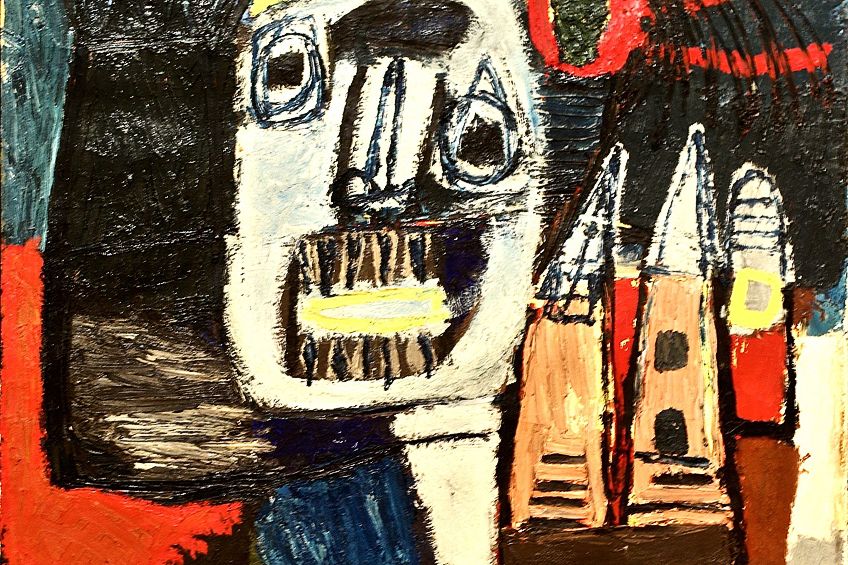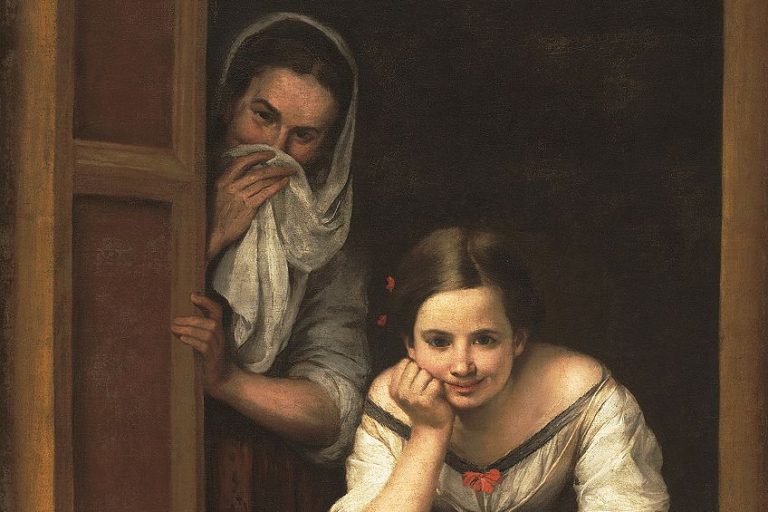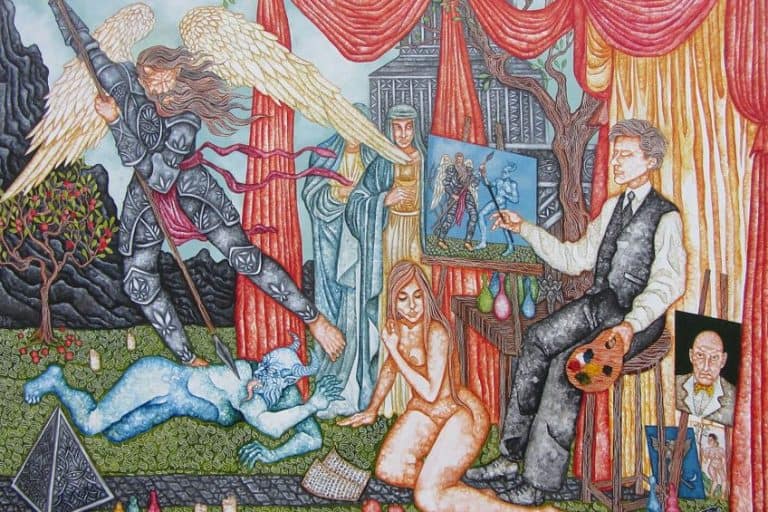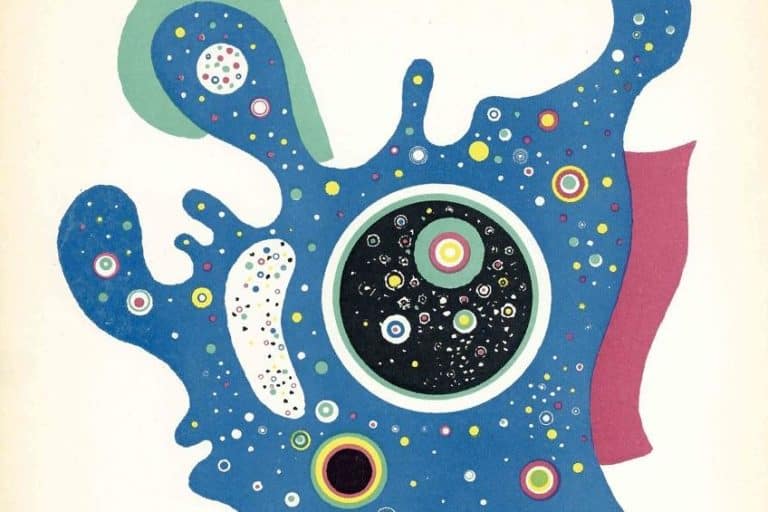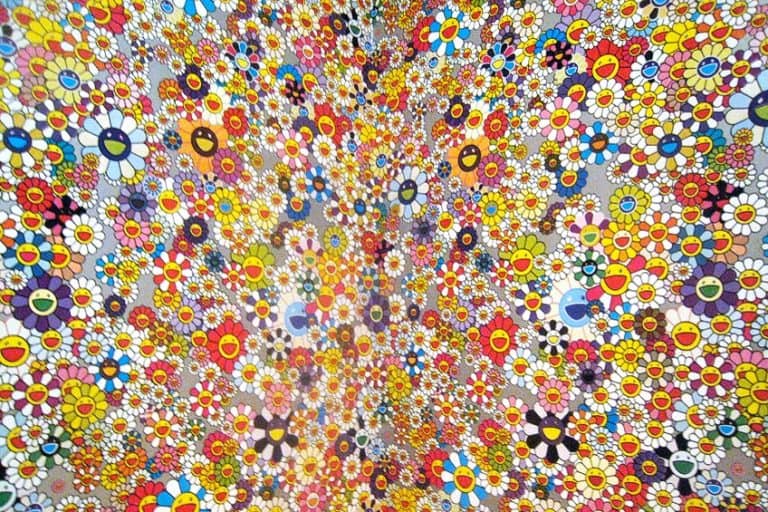Neo-Expressionism – An Exploration of the History and Legacy
The Neo-Expressionism movement emerged towards the end of the 1970s and was considered both a late Modernist and early Postmodern painting and sculptural style. Developing in reaction to conceptual and minimal art, Neo-Expressionism was said to have been overtly inspired by the German Expressionist movement. The type of works to emerge from this period in art were often quite vivid and abstract, as recognizable objects made up the subject matter and were roughly portrayed emotionally.
A History of the Neo-Expressionism Movement
Studying the complicated art style that made up Neo-Expressionism can lead you down a rabbit hole of theories. This is because countless explanations have been speculated about this late 20th-century art movement, yet hardly any consensus exists. Each interpretation of what Neo-Expressionism truly was and what it stood for differs in perspective and is often contradictory to the other ideas that have been suggested.
The biggest topic of discussion is the origin of the movement, which has wavered between the 1960s and 1970s.
While the majority of art historians believe that Neo-Expressionism developed in Germany, as it connected to some pre-World War Two expressionist ideals, others have postulated that the movement originally emerged in Italy and the United States of America. Neo-Expressionism is widely believed to have been a natural extension of the German Expressionism and Abstract Expressionism movements.
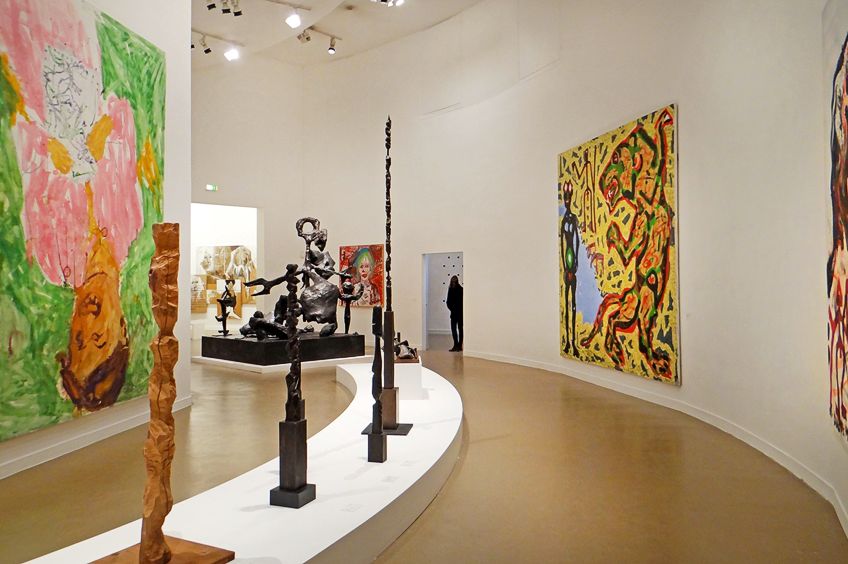
While some people have branded Neo-Expression as a fervent reaction against Minimalism, others firmly believe that it was not a genuine art movement at all. This was because the majority of the artworks that were produced appeared to be a mere invention of art that was already present on the market. However, while many disagreements still exist, almost everyone who has encountered Neo-Expressionism has believed it to be one of the last measured global art movements that occurred before the onset of Post-Modernism.
Despite the conflicting information that surrounds the Neo-Expressionism movement, it has widely been regarded as one of the most fascinating art movements to ever exist.
This is because its purpose was said to lie purely in the art that was created, and was made up of paintings, sculpture, and many other forms of art. Additionally, Neo-Expressionism’s associative abstract qualities and the way in which it has outlasted all of the countless questions regarding its actual worth is what has aided in its lasting popularity.
The Beginning of Expressionism
The original Expressionism movement emerged at the start of the 20th century as a reaction to the Modernist unhappiness that was fostered in society. The result of industrialization and urban growth led individuals to have a more indifferent and unconcerned relationship with the physical world, which was portrayed in the artworks of the time. Instead of creating simple imitations of the natural world, Expressionists distorted forms and colors in their crude renderings to provoke some emotional reactions from their viewers.
By the time the 1930s rolled around, the Expressionism movement was treated with hostility and labeled as a “degenerate” style of art by the Nazi dictatorship.
Despite being branded this way, Expressionism encouraged the development of truly extraordinary artists, with the majority of these creatives emerging from Germany towards the end of World War Two. After the 1950s, iconic Expressionism artists like Georg Baselitz helped lead the return of Expressionism back into broader Europe.
However, it was only around the late 1970s and early 1980s that the artworks that borrowed the style and characteristics of Expressionism became known as Neo-Expressionism. This new form of Expressionism rebelled against the so-called impressive movements of Pop Art, Conceptual Art, Minimalism, and Postmodernism.
Artists expressed great joy in returning to more emotional content, subjective colors, and twisted forms, which were all popular in the earlier movements of Fauvism, Die Brücke, Der Blaue Reiter, and Abstract Expressionism.
The Domination of Neo-Expressionism
Neo-Expression proved to be an extremely commanding art movement that developed towards the end of the 20th century. As it dominated the art market until the mid-1980s, the movement was able to succeed internationally and was seen by many art critics as a resurgence of the conventional themes of self-expression in European art long after American influence. This led to fervent discussions about the true social and economic value of Neo-Expressionism art pieces, as the movement was labeled a failure of extreme imagination.
As the movement progressed, critics became very disapproving of Neo-Expressionism art’s marketability within a quickly expanding and ever-changing art market.
Certain methods used within these paintings, as well as some subjects, were thought to be very outdated and old-fashioned in the modern world that was developing. A concept that was still an issue within Neo-Expressionism was the complete exclusion of female artists from the movement, as most of the work created by these women was omitted from exhibitions.
The most infamous example of this marginalization occurred at the 1981 New Spirit in Painting exhibition in London. The work of 38 Neo-Expressionism artists was displayed but not a single female painter was included. Some of the most prolific Neo-Expressionism artists were in fact females, such as Elizabeth Murray and Maria Lassnig, whose works were routinely left out.
The blatant exclusion of women from an exhibition that supposedly took place in the modern world demonstrated how much further society still had to go.
The Types of Subjects in Neo-Expressionism Art
The kind of artworks that were created during the Neo-Expressionism movement generally depicted subjects in a very raw and crude manner. Despite being rejected by the preceding art movements, the textured and expressive brushwork, as well as the vivid and violent colors that were used, demonstrated the shock value that was typically associated with Neo-Expressionism art.
As the work of Neo-Expressionist artists was closely related to the buying and selling of art, critics began to doubt the authenticity and motivation of the artworks.
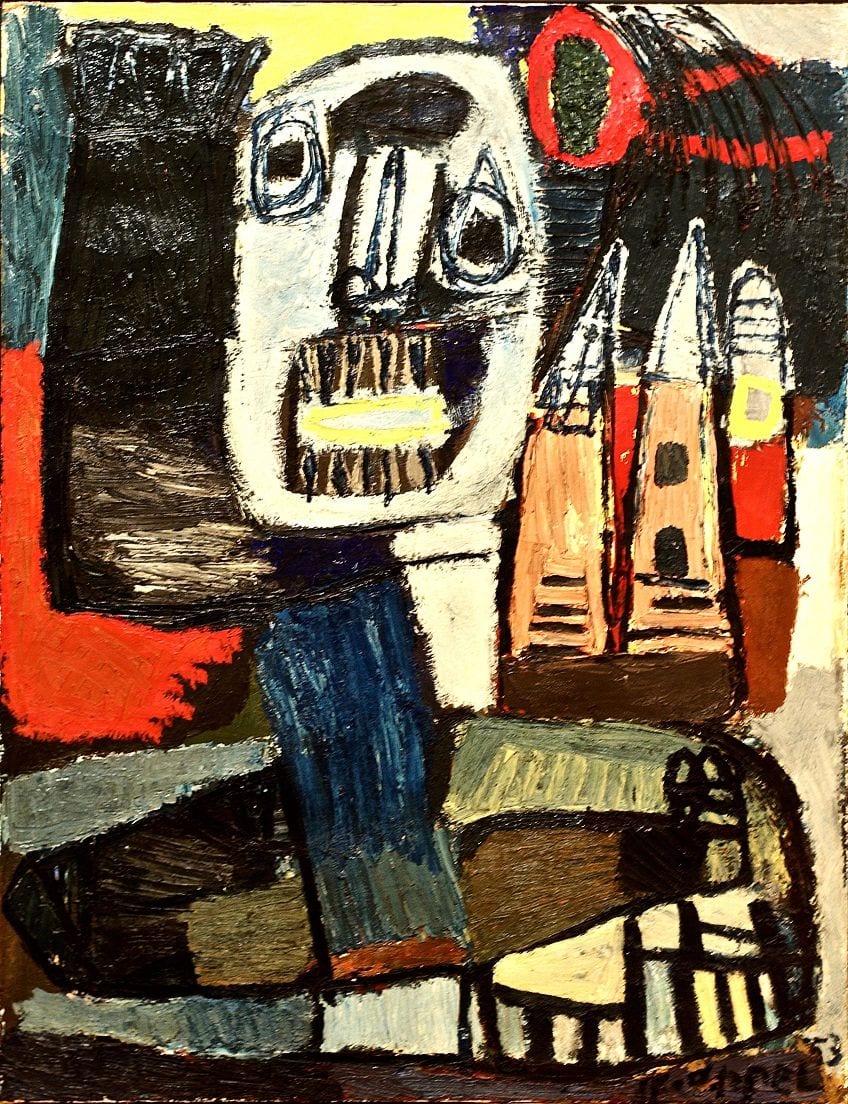
Neo-Expressionism art existed to depict a wholly accurate and unfiltered slice of life, but its inspiration and great popularity were considered to be the root of its ultimate demise. Since Neo-Expressionism restored historical and mythological imagery, which went against the Modernist tendency to reject all storytelling, the subject matter of the works was regularly questioned.
Despite this, the subject matter that was used in Neo-Expressionism artworks was thought to play a significant role in the transition from Modernism to Postmodernism.
The visual style of Neo-Expressionism was essentially decided on by philosophy as opposed to any perceptible aesthetic guidelines. This meant that while the artists did not try to avoid figuration, they did not make any concerted effort to perfect it either. As Neo-Expressionism art was seen as controversial, it has long been considered a form of outsider art.
The Spread of Neo-Expressionism
After it emerged, Neo-Expressionism proved to be an incredibly influential movement as it spread all over Europe and eventually to America. Despite being made up of the same style and characteristics, Neo-Expressionism was known under different names in various places, with each area adding its own distinct twist to the style.
The major regions where Neo-Expressionism spread to were Germany, Italy, France, and the United States.
Neo-Expressionism in Germany
The Neo-Expressionism movement arrived in Germany in 1963 after artist Georg Baselitz opened up an exhibition in West Berlin. The show caused much dispute, which led to the State Attorney confiscating the artworks of the show on the basis that the content matter was indecent. This was because the type of paintings that Baselitz put on display showed one figure that appeared to be masturbating, while another painting portrayed a male figure with an erection.
After causing such a stir, Baselitz became firmly known as the head of Neo-Expressionism in Germany.
The movement went by the name of “Neue Wilden”, which translated to “New Fauves”, and was incredibly intense. This was because it was often referred to as the new German Identity in the post-Nazi yet still very violent society. Thus, German Neo-Expressionism art pieces were characterized by harsh and impulsive brushstrokes, as well as Fauvist-inspired vibrant colors, that helped create vicious and often incomplete forms.
Despite Baselitz originally moving from East Berlin to West Berlin in 1956, the majority of his subject matter was selected from his East German beginnings. Baselitz was known to be a rebellious art student, which showed in the artworks he created. While his later exhibitions did not attract as much controversy, his expressionist figuration continued to draw attention.
Baselitz was considered to be both a trailblazer and a rogue within the Neo-Expressionism movement, as he purposely explored the “how” of painting over the “why”.
Expressionism became the official art style of East Germany after World War Two due to the animosity that was shown by the Nazis toward the original German Expressionist artists. The return to Expressionism formed part of a universal shift in society towards addressing Germany’s disturbing modern history, with every Neo-Expressionist artist using their work to closely examine the country and its problems.
Neo-Expressionism in Italy
When Neo-Expressionism spread to Italy, the movement accepted a broad range of poetic, mythologic, and distorted figurative imagery in the works that were created. Neo-Expressionism was also known as “Trans-Avantgarde” in Italy after the term was invented by the art critic Achille Bonito Olivia in 1979.
The inspiration behind this name was to get away from the sparseness left by the Italian Arte Povera movement, with the early 20th century movements of Futurism, Symbolism, and Surrealism further encouraging the style.
The “Trans-Avantgarde” was essentially introduced as a response to another influential Italian avant-garde movement, which was Arte Povera. Thought to have a strong sense of imitation, this Neo-Expressionism style was fairly similar to that of the German style, as an overlap of characteristics could be seen in the artworks of Italian artists.
Some truly significant artists of that time, whose artworks seemed to allude to various ancient Italian sources, include Sandro Chia, Enzo Cucchi, Nicola De Maria, and Mimmo Paladino.
However, the most iconic Italian Neo-Expressionist artist of the time was perhaps Francesco Clemente, who divided his career between New York City and India to continually engage with the particular stylistic influences of each setting. Clemente, along with other leading Italian Neo-Expressionists of the time, made use of bold and suggestive colors within their works, as this branch of Neo-Expressionism also borrowed heavily from the Fauvist tradition.
Neo-Expressionism in France
Another European country where Neo-Expressionism spread was France, although the group of artists practicing within this movement here was significantly small. French Neo-Expressionist artists were referred to as members of the “Figuration Libre” group, which was mostly made up of city-dwellers.
The demographics of the group were based on the artworks that were made, as the majority of the paintings depicted common urban scenes.
Traditional French Neo-Expressionism artworks sourced most of their subject matter from advertising, the media, and rock music. This led to works that featured gloomy creatures and dark scenery to be depicted, with paintings often having a sensual undertone.
Additionally, garish colors borrowed from Fauvism were also used, which demonstrated the connection between French Neo-Expressionism and the other branches of the movement.
Neo-Expressionism in America
Across the ocean, Neo-Expression was quickly welcomed in 1980s America as the return of the Expressionism movement. American Neo-Expressionism set up its headquarters in New York City which, along with the shameless consumerism of the time, allowed the art market to grow at an exponential rate. This led to the selling prices of contemporary Expressionism artworks, along with other art movement pieces, to reach seemingly absurd heights. Rather than dismissing this environment of commodification, American artists wholly embraced it.
The period of Neo-Expression ushered in a resurgence of painting within the United States.
Two specifically American schools of paintings were developed, which were usually classified under the broader heading of Neo-Expressionism. These schools were known as Bad Painting and New Image Painting. Bad Painting rejected any “good taste” in art, as well as the supposed intellectualism of Conceptual Art. Instead, artworks of this style chose to reflect upon the troubling and particularly savage nature of contemporary American society.
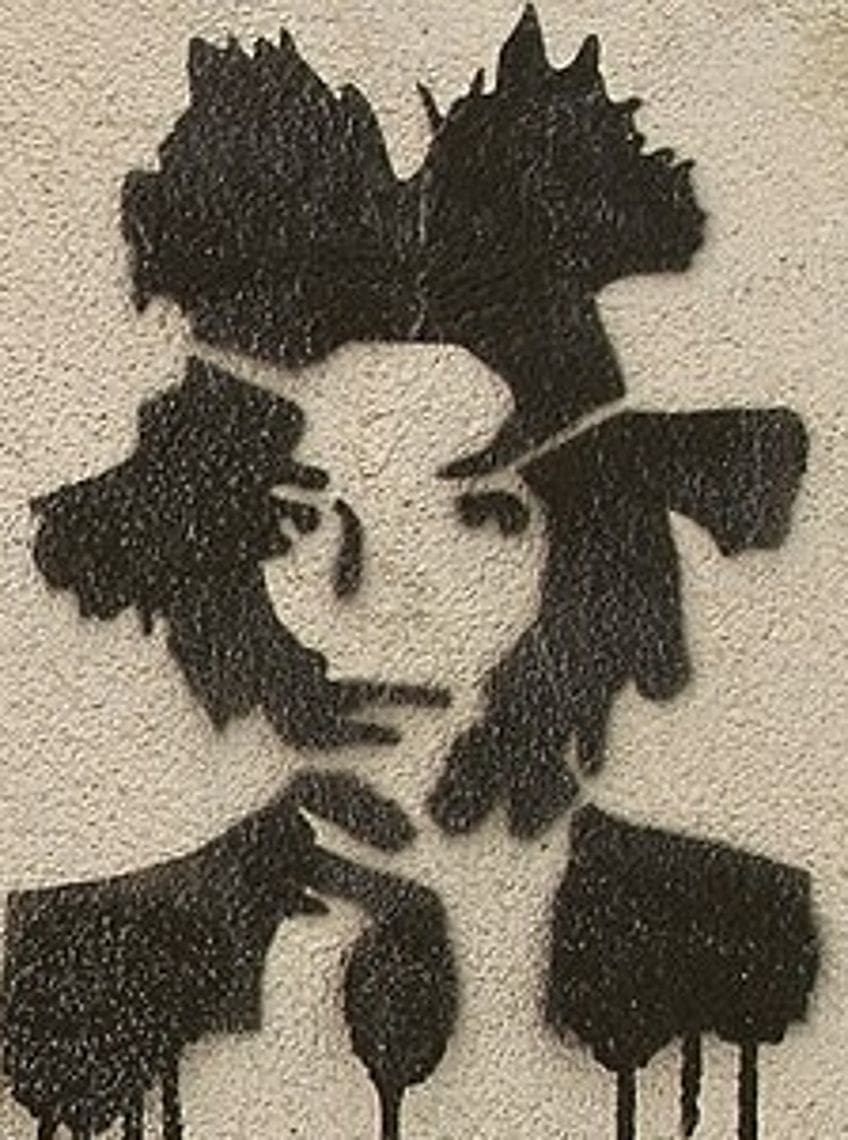
In contrast, New Image Painting was introduced by an exhibition of the same name that was held in 1978 at the Whitney Museum of Modern Art. The type of paintings that were displayed made use of easily recognizable imagery that was semi-abstracted so that it took on the harsh style of a cartoon.
With the development of both of these groups under Neo-Expressionism, many artists felt free to create art in this conventional manner that allowed the combination of abstract and figurative forms made famous by earlier styles.
Certain creatives became key representatives for American Neo-Expression by challenging the content that was seen in galleries through the type of paintings they created. Artists like Eric Fischl and Julian Schnabel became prominent members of American Expressionism, as they explored concepts like human psychology and history to create highly personal works. Additionally, Jean-Michel Basquiat was well-known for his forceful brushstrokes and vat splatters of paint, which were said to lead to the arrival of graffiti art in galleries.
An Appropriate Neo-Expressionism Definition
As Neo-Expressionism proved to be such a complex movement, the exact qualities that made the style stand out have been difficult to accurately describe. As the tendencies that have been associated with the movement emerged around the same time in various countries, each artist who was involved with its development had a hand in adding their own distinctly personal style to it. Some artists took a more abstracted approach to their Neo-Expressionist art, while others chose to create works that appeared to be hyper-realistic.
When attempting to understand one of the last international contemporary art movements to come from the late 20th century, finding a suitable Neo-Expressionism definition has proven to be challenging.
Thus, the movement has been described as one that focused on the revitalization of painting through the use of strong colors, as well as objects and symbols that were borrowed from other significant art movements. These included German and Abstract Expressionism, Fauvism, Cubism, Minimalism, Conceptual Art, Surrealism, and Pop Art.
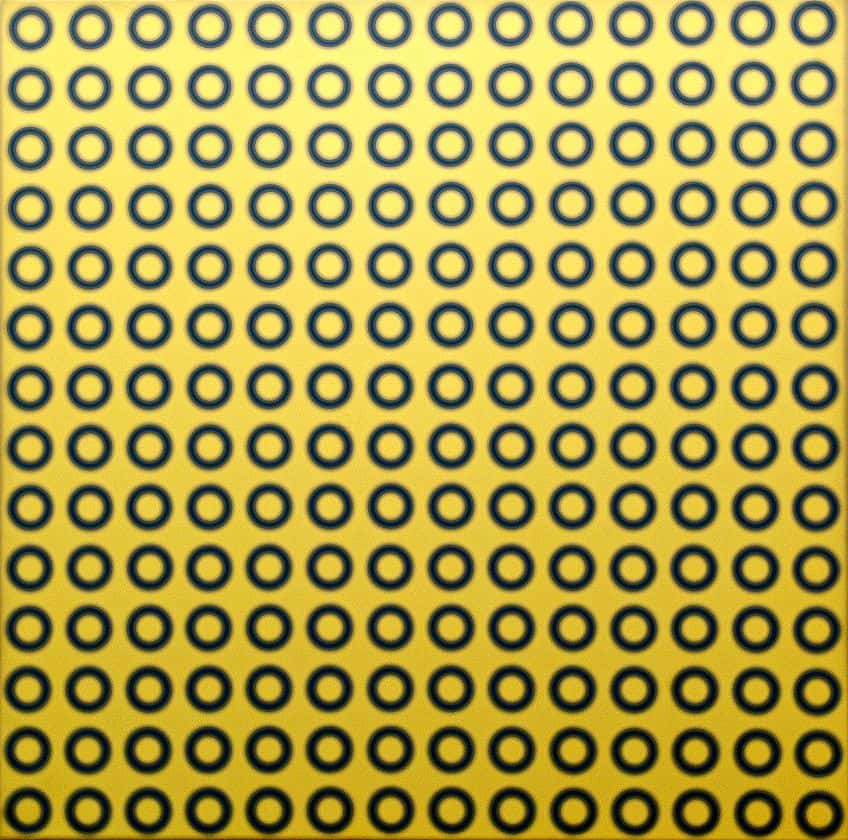
Art historians have also described the Neo-Expressionism movement as a response to the style of creation that dominated Postmodern art in the 1970s. In addition to the aspects of other art movements that Neo-Expressionism attempted to replicate, an appropriate definition described it as a movement that embraced a wide variety of national styles of painting, that all shared certain common features. In essence, the development of Neo-Expressionism helped mark a return to the traditional format of easel painting within art.
As the artworks were exhibited in the best galleries housing other contemporary art, Neo-Expressionism was known by a variety of names across the world. As the movement’s name depended on the region where the art came from, Neo-Expressionism, as it was referred to in America, was known as “New Fauves” in Germany, “Beyond the avant-garde” in Italy, and the “Free Figuration” in France.
The multiplicity of the movement, as seen by the various titles, demonstrated that the true Neo-Expressionism definition had no clear consensus.
Key Characteristics of Neo-Expressionism
Within the Neo-Expressionism movement, certain features were typically included to adhere to the philosophies of the style. What was said to characterize the artworks of Neo-Expressionism was the almost instantaneous return to painting as a primary and natural form of artistry. This return was perfectly reflected in the usually grand-scale pieces that were produced, which were coated in dense layers of paint and raw brushstrokes that made use of passionate and vibrant colors.
Due to this, a key characteristic of Neo-Expressionism art was the heavy focus that was placed on form and how an artwork was created.
This meant that the represented meaning became of secondary importance within artworks, as artists asserted a battle on the concept of narration. Instead, Neo-Expressionists chose to embrace the characteristics of iconography, primitivism, nature, mythology, and history in an often suggestive manner, which proved to be well-received during the 1980s.
Despite knowing what the broader Expressionism movement was all about, audiences and critics were baffled as to why its comeback was never entirely carried out until the late 1970s. This led many to view Neo-Expressionism as a trend instead of a proper art movement. Therefore, it took almost half a century for artists to establish Neo-Expressionism and its defining characteristics, which responded to the dominant influences and styles of the time.
Another characteristic of the movement, which is sometimes seen as the most important one, was that Neo-Expressionism discarded the intellectualized and polished approach to art in its attempt to return to the expression of piercing emotions.
Neo-Expressionism existed as a refreshing view that suggested a different perspective when looking at art, even if it only existed for a short period. Thus, when considering the true characteristics of Neo-Expressionism, the translation of genuine feelings and ideas proved to be of most importance.
Some Famous Neo-Expressionism Artworks and Their Artists
As the Neo-Expressionism movement proved to be quite extensive, many artists from a variety of countries experimented with the features and characteristics of the style, producing significant paintings and sculptures. Most of the iconic artists came from the top three countries that played around with the movement, such as America, Germany, and Italy. Below, we will be taking a look at some of the most well-known artworks to emerge from this period in art history.
Georg Baselitz (1938 – Present)
| Date of Birth | 23 January 1938 |
| Date of Death | Present |
| Nationality | German |
| Art Movements | Neo-Expressionism |
Perhaps the most prolific member of the Neo-Expressionism group was German painter and sculptor, Georg Baselitz. As the founder of the “Neue Wilden” Expressionist group in Germany, Baselitz helped German Neo-Expressionism break away from the abstraction and formalism of the dominating Conceptual Art movement of the time.
In his artworks, Baselitz focused on the inclusion of provocative subject matter and the significance of intense colors to create distinct paintings that represented the chaos of the modern world.
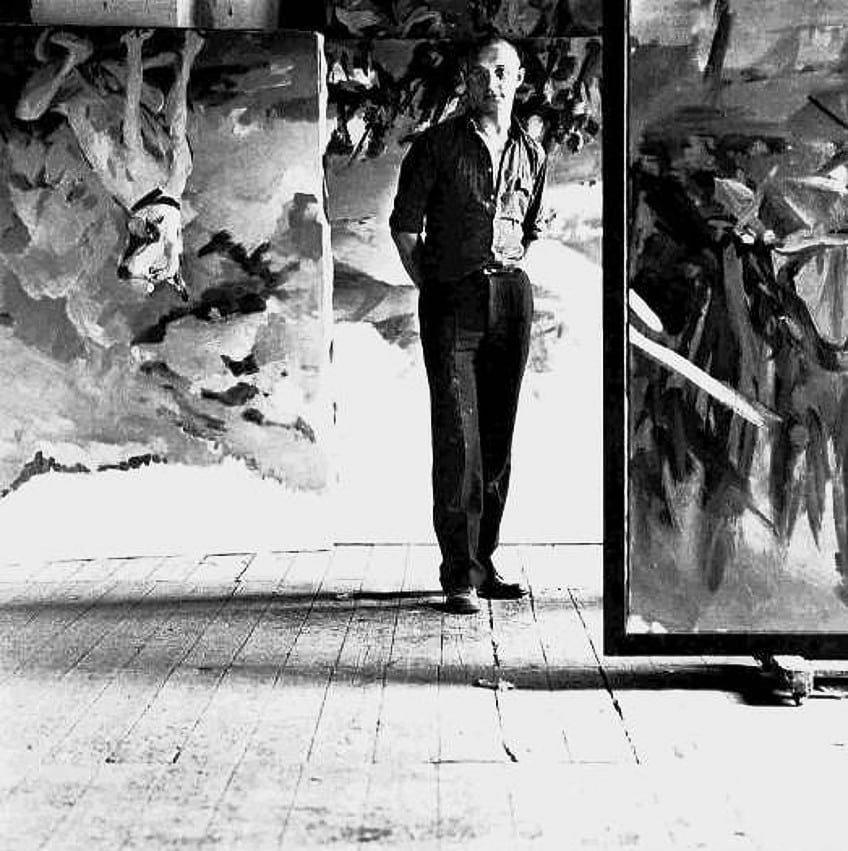
After dabbling with Abstract Art, Baselitz abandoned that form to revive the characteristics of German Expressionism, which was previously closed off by the Nazis. This led to the emergence of Neo-Expressionism, which allowed Baselitz to express his contentious beliefs and concerns through painting.
Adieu (1982)
| Year | 1982 |
| Medium | Oil on canvas |
| Dimensions | 250 cm x 300.5 cm |
| Where It Is Currently Housed | Tate Britain, London |
One of his significant oil paintings includes Adieu, which he painted in 1982. Within this work, two figures are seen to be depicted upside down, implying that they had no point of origin and remain awkwardly suspended in space.
Despite not attributing any tangible meaning to “Adieu”, Baselitz’s painting served as a visual example of the recent disturbances that had occurred in Germany.
By hanging the figures in a horrifying sort of limbo, an abundance of space existed between the top of the picture and the vacant space below them. The title of the work also suggested a theme of detachment, which was further confirmed by the bodies turning away from one another. The vicious and expressive brushwork also implied the theme of violence, as the figures look very rough.
Elizabeth Murray (1940 – 2007)
| Date of Birth | 6 September 1940 |
| Date of Death | 12 August 2007 |
| Nationality | American |
| Art Movements | Neo-Expressionism |
One of the major female contributors to Neo-Expressionism was the American painter and printmaker Elizabeth Murray. While her artworks appeared to be entertaining and cartoonish in nature, they also conveyed a serious commitment to the characteristics of Neo-Expressionism and the movement’s countless possibilities.
Despite creating some truly iconic paintings of the time, Murray was routinely excluded from multiple Neo-Expressionist exhibitions along with several other female artists, simply due to their gender.
Wiggle Manhattan (1992)
| Year | 1992 |
| Medium | Lithograph |
| Dimensions | 146.7 cm x 72.7 cm |
| Where It Is Currently Housed | Museum of Modern Art, New York City |
Murray was famous for widening her painting’s dimensions by working across numerous canvasses and fragmenting the pictorial place by breaking up both the image and the painted object. This fragmentation can clearly be seen in her 1992 painting titled Wiggle Manhattan, which appears to be an uncomplicated scribble of intersecting lines.
Elements of abstraction can clearly be seen within this artwork as well, as Murray regularly made use of these features to ensure that her works were unique, silly, and playful.
In Wiggle Manhattan, Murray depicted a straightforward outline of the map of Manhattan, with the bold red lines representing a strong dissection between New York’s many streets and avenues. By blocking off sections, Murray demonstrated the influence of Cubism within this work. Incorporating some elements of Surrealism, Murry went so far as to insert some ghostly figures in this lithograph underneath the red lines.
“Wiggle Manhattan” essentially poked fun at the contemporary Expressionism seriousness seen in a medium like painting.
Jörg Immendorff (1945 – 2007)
| Date of Birth | 14 June 1945 |
| Date of Death | 28 May 2007 |
| Nationality | German |
| Art Movements | Neue Wilde |
German painter, sculptor, and art professor Jörg Immendorff was a significant member of the “Neue Wilde” group during the late 1970s and early 1980s. As a Neo-Expressionist artist, Immendorff sought to create a type of harmony between his artworks and social activism, which led him to grapple with the political disconnect that was present in Germany at the time.
Despite bringing this air of frustration into his artworks, his paintings all seem to wonder what art and the artist can do within society.

Café Deutschland I (1977 – 1978)
| Year | 1980 |
| Medium | Acrylic on canvas |
| Dimensions | 280 cm x 350.7 cm |
| Where It Is Currently Housed | Museum of Modern Art, New York City |
One of his notable oil on canvas works, painted between 1977 and 1978, was Café Deutschland I. This artwork formed part of a series made up of 16 other paintings and existed as the first painting in the group. Demonstrating the influence of the German Expressionist style, Café Deutschland I used a deformed type of perspective and crude characterizations of the individuals within the work.
Immendorff included himself in the work, as he stood in the center with his right hand smashing through what was thought to be the Berlin Wall.
In the chaotic and dark background, both dancers and adulterers can be seen mingling with one another in what appeared to be a harrowing type of underground club. By using this club scene populated with people and objects, Immendorff referred to the divide that existed within Germany during the 1970s and 1980s.
The most notable symbol of this segregation in society was depicted by the swastika that Immendorff included on the left-hand side of the work, held between the talons of an eagle.
Anselm Kiefer (1945 – Present)
| Date of Birth | 8 March 1945 |
| Date of Death | Present |
| Nationality | German |
| Art Movements | Neo-Expressionism |
German artist Anselm Kiefer has provided the art world with an exceptional body of art, with the majority of his works addressing past and present controversial issues from history. When Kiefer started out, his massive and often challenging works were seen as progressive for a time when the painting medium was all but disregarded.
Celebrated for his artworks that dealt with German history surrounding the Holocaust, Kiefer forced his peers to acknowledge Germany’s past in a time where any confirmation of Nazism was prohibited.
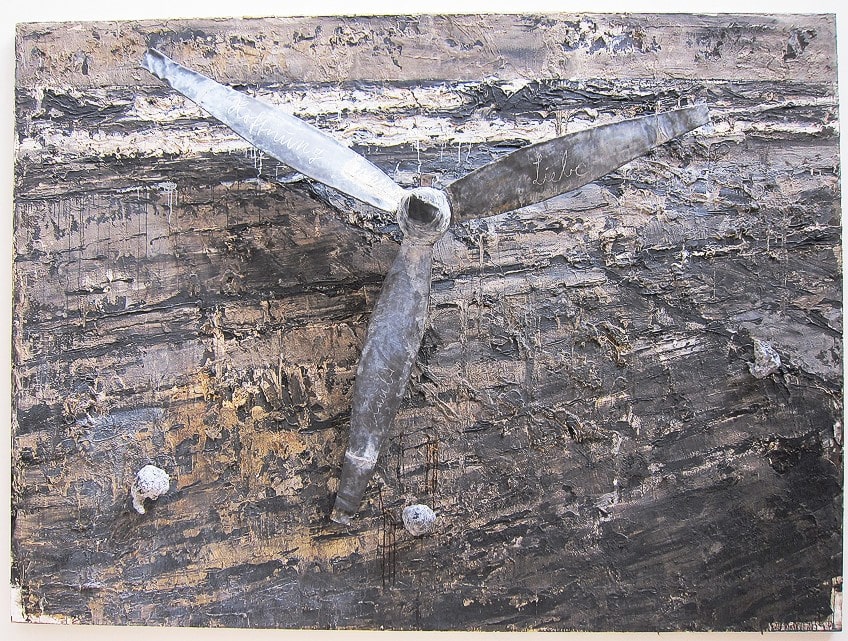
Interested in a variety of strange and unusual media, Kiefer looks for the symbolic meaning in his materials before creating his artworks. This has led to his imagery being seen as very broad, as many different themes are combined. Kiefer continues to produce art today and since 2008, has lived and worked mainly in Paris.
Bohemia Lies by the Sea (1996)
| Year | 1996 |
| Medium | Oil, emulsion, shellac, charcoal, and powdered paint on burlap |
| Dimensions | 191.1 cm x 561.3 cm |
| Where It Is Currently Housed | Metropolitan Museum of Art, New York |
In this Anselm Kiefer artwork, the themes of death, paradise, and revival are explored through the intricately interwoven symbols. Titled Bohemia Lies by the Sea, Kiefer’s artwork alludes to many possible meanings. However, the main meaning behind this artwork is thought to relate to a poem that Kiefer referenced, where the concept of yearning for something lost is understood. Written by Austrian poet Ingeborg Bachmann, the writer demonstrates a longing for an idealistic society whilst simultaneously mourning its delusion. This idea comes to the front when viewing Bohemia Lies by the Sea.
The inclusion of “bohemia” in the title is thought to refer to German Bohemia, which is now a part of the Czech Republic after the Second World War.
This massive artwork, divided down the middle by a road, is typical of the monumental works that Kiefer produced, which were known to completely engulf the viewer through their size and intensity. A possible reason for the enormity of Anselm Kiefer’s artworks is that he wanted to include viewers in the pain and importance of the themes that he was dealing with.
Eric Fischl (1948 – Present)
| Date of Birth | 9 March 1948 |
| Date of Death | Present |
| Nationality | American |
| Art Movements | Realism and Neo-Expressionism |
Eric Fischl was another American painter and sculptor who was an active and influential member of the Neo-Expressionism movement. His art collection was typically marked by multicolored portraits, suburban interiors, beach scenes, and any other topics that strongly captured his attention.
An area that was particularly fascinating for Fischl was any issues regarding the human body and sexuality, especially how these issues intersected with modern American society.
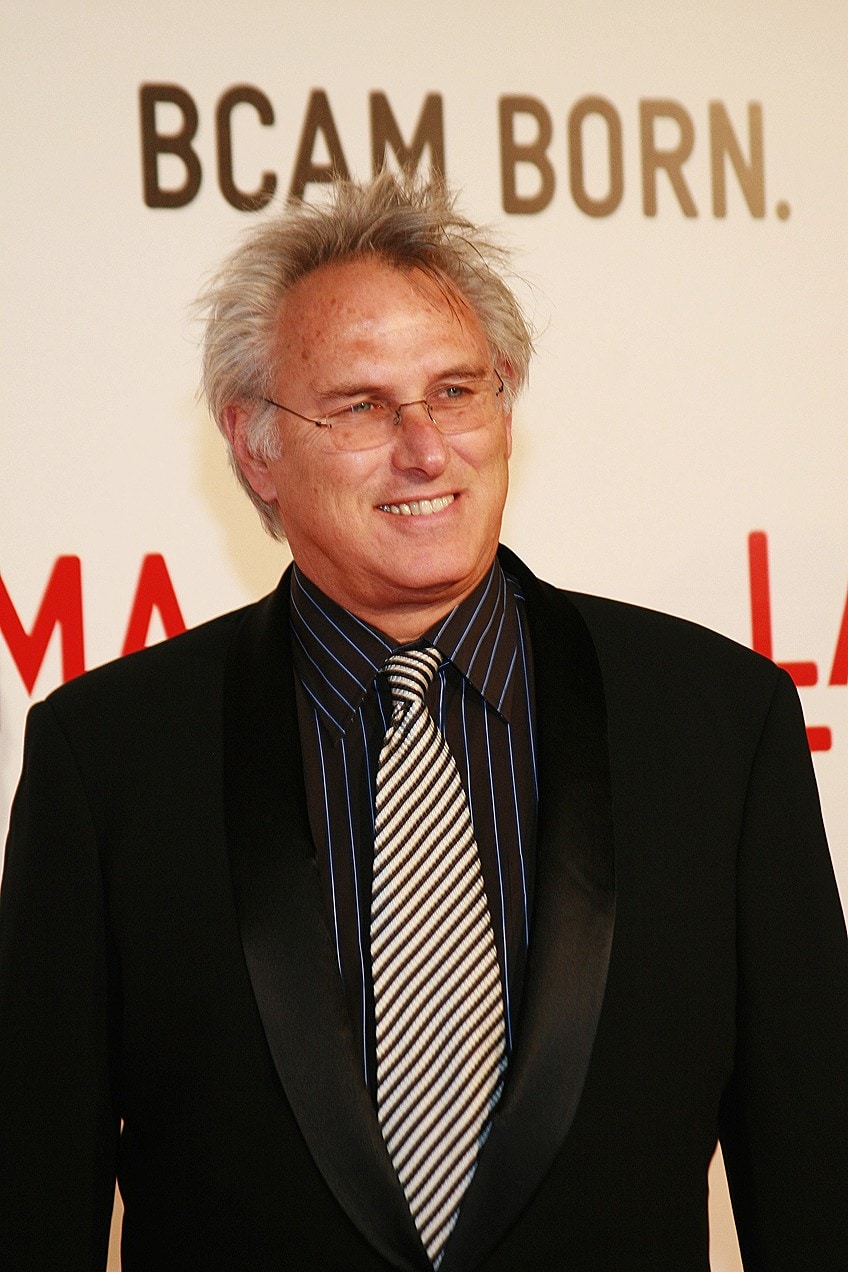
Bad Boy (1981)
| Year | 1981 |
| Medium | Oil on canvas |
| Dimensions | 1.7 m x 2.4 m |
| Where It Is Currently Housed | Saatchi Gallery, London |
Fischl was known as the bad boy of Neo-Expressionism thanks to his representations of marginalized suburbia that referenced everyday life and true human fragility. One of his well-known works was Bad Boy, which he painted in 1981, where he added an element of human psychology that looked to have gone wrong.
This painting depicted a very graphic nude scene of a woman lying on a bed while a young boy watched. While these two figures physically occupied the same room, they were said to exist in individual psychological spheres.
The light shadow pattern created by the blind highlighted the raw sensuality of the female figure, who lay completely exposed and unashamed on the bed. Symbols of fertility are seen through the bowl of fruit behind the boy, as well as the open purse which mimics the vagina.
The adolescent boy simply gazes upon the self-centered and sexually charged pose of the woman who was thought to be his mother, while he breaks his stoic pose by reaching back and stealing something from the purse.
Francesco Clemente (1952 – Present)
| Date of Birth | 23 March 1952 |
| Date of Death | Present |
| Nationality | Italian |
| Art Movements | Symbolism and Neo-Expressionism |
One of the most iconic Italian artists who practiced Neo-Expressionism was Francesco Clemente, who helped with the development of “Trans-Avantgarde”. Similar to other Neo-Expressionists, Francesco’s artworks also promoted a strong connection between the themes of sexuality, raw emotion, and even violence at some points.
By incorporating visual elements taken from Surrealism, Clemente also hinted at the dark side of humanity within his paintings, as well as signs and symbols originating from other cultures.
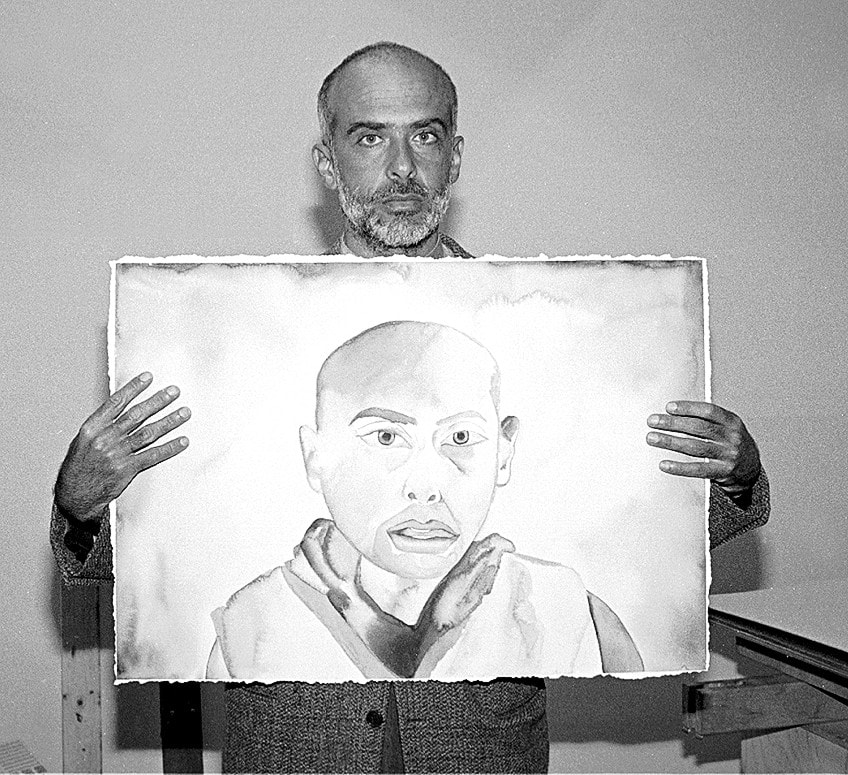
Within his artworks, Clemente depicted the much darker and unspoken psychological aspects that accompany being human, drawing on elements of Surrealism to exaggerate these themes. This also helped him to build on Neo Expressionism’s revelations of inner emotional states.
When compared to other Neo-Expressionist artists of the time, Clemente worked with a variety of cross-cultural beliefs and symbols to tackle various existential human concerns.
Scissors and Butterflies (1999)
| Year | 1999 |
| Medium | Oil on canvas |
| Dimensions | 233.7 cm x 233.7 cm |
| Where It Is Currently Housed | Guggenheim Museum, New York City |
A Neo-Expressionist art piece of his that has been particularly well-known was his 1999 oil on linen painting, titled Scissors and Butterflies. Portraying some type of self-portrait, Clemente depicted his unique version of what a portrait consisted of. Three figures can be seen floating in and amongst each other in a circular ring, with three large butterflies joining them.
By using a sensual style that he acquired during his many trips to India, Clemente created quasi-abstract forms that combined elements of both animal and human figures.
Within Scissors and Butterflies, a type of metamorphosis between the elements of animals and humans, masculine and feminine, and violence and spiritualism can be seen. By mixing features of erotica with a burning type of anger, as implied by the colors used, Clemente referenced the unswerving atmosphere and violence that he observed while living in New York.
This inner battle of expressiveness was often seen in Neo-Expressionism art, with Clemente making this struggle the central focus of his painting.
David Salle (1952 – Present)
| Date of Birth | 28 September 1952 |
| Date of Death | Present |
| Nationality | American |
| Art Movements | Contemporary Art, Postmodernism, and Neo-Expressionism |
American painter, printmaker, and photographer David Salle has been a prominent presence in the art world, experimenting with a variety of different genres including Contemporary art, Postmodernism, and Neo-Expressionism. Salle began producing art at a time when painting was considered outdated, and Minimalism was the predominant artistic style. Instead of creating artworks that could be understood as rigid images, Salle took realistic images and combined them in such a way as to force viewers to focus on the components of shape, color, and form as well.
Salle’s artistic style would be described as pastiche, as he mocked Minimalism by taking its rigid ideals and completely turning the style on its head.
This led his artworks to take on an Abstract Expressionist tendency, which led to Salle working within the Neo-Expressionism style. In his artworks, recognizable images are joined together completely out of context, such as the use of different body parts floating at random by themselves on top of a blank canvas. David Salle’s use of perspective forces viewers to consider the information in different and new ways, as he disrupts our association from what is normal to what could be seen as brand new.
While he is mostly known for his artworks, Salle also wrote for fellow artist Andy Warhol’s “Interview” publication, as well as the popular “ArtForum”.
Comedy (1995)
| Year | 1995 |
| Medium | Oil and acrylic on canvas |
| Dimensions | Unknown |
| Where It Is Currently Housed | Guggenheim Museum, New York City |
A notable artwork of David Salle’s is Comedy, which was created in 1995. The most noticeable thing about the artwork is that it is made up of two unmistakably different halves; one in color and the other in monochrome purple. On the left-hand side of the composition, four figures are shown to be sitting down and directly looking at viewers. The figure closest to the front smiles, while the others behind him follow suit. However, the intensity of the smile dwindles the further back you go, with the last figure not displaying much emotion at all.
On the right-hand side of the canvas, an incredibly domestic scene is shown. While it may appear normal at first, it has been completely turned on its side, changing its perspective. Salle made use of the elements of collage on this side of the artwork, as a variety of images have been mixed to form the main image.
As this painting displays motifs and objects that were used in Salle’s previous artworks, they act as the continuation of his obscure representation of the duties and assumptions of women in American society. Salle’s comment on the role of women is further emphasized by his juxtaposition of the girl on the left in the domestic scene to the image of a wedding dress on the right.
While her mischievous smile makes light of the situation, the wedding dress exists as an ever-present reminder of domestication and again comments on the supposed role of women in society.
The Legacy of Neo-Expressionism
After dominating the European and American art markets from the late 1970s until the mid-1980s, the popularity of Neo-Expressionism began to decline. It was said that the quick deterioration of Neo-Expressionism was unlike any other 20th century art movement. Despite this, some debate has existed regarding how the later developments of Neo-Expressionism essentially led to the strain and eventual wear out of the movement.
By the time the late 1980s rolled around, it seemed as if the art market was beginning to lose interest in the features of the Neo-Expressionism movement. Art critics and audiences began turning towards and responding to the critical new form of Postmodernism, as the search for a more explicitly avant-garde medium in art grew bigger. What was once viewed as a romanticized and Fauvist outlook on art was suddenly seen as backward and conventional, which gave Neo-Expressionism and its art an extremely negative connotation.
Nevertheless, these critiques did little to put a damper on the movement’s success.
Its decline was seen as a result of the movement’s surplus production and the subsequent downfall of the art market by the end of the 1980s. Despite this, scholars and critics have yet to decide as to the exact placement of Neo-Expressionism within the broader art historical narrative. A division existed between viewing Neo-Expressionism as both a late manifestation of Modernism and as a true end to the Modernist era.
While a few of the movement’s leading artists are still included in some exhibitions today, the majority of Neo-Expressionism painters have been largely forgotten about.
It has not helped that major art museums typically pretend that Neo-Expression did not exist as an art movement. This was further emphasized by the date of the last major Neo-Expressionism exhibition that was put on, which took place at the Guggenheim Museum in 1999.
For a culture that thrives on revivals, the contemporary Expressionism works of the movement have remained unfashionable. Additionally, the exclusion of female artists within Neo-Expressionism did not bode well for the movement’s longevity, with more modern art movements guiding the art world in a new direction. The technological advancement that began in the late 1990s, which led to the emergence of the internet, proved to be a major turning point in art, as even less interest in the Neo-Expressionist style was paid.
The development of Neo-Expressionism led to the emergence of truly prolific artworks which played an enormous role in the growth of the art world. The Neo-Expressionist style indicated the true impact of previous art movements, like both German and Abstract Expressionism, as its appearance was largely due to the great influence that other styles had on its spread. If you have enjoyed reading about this iconic movement, we encourage you to explore other artists who made a meaningful contribution to the period.
Take a look at our Neo-Expressionism art webstory here!
A Summary of the Neo-Expressionism Movement
What Was Neo-Expressionism?
Developing towards the late 1970s, Neo-Expressionism was a revival of the original Expressionist movement. It was also inspired by the German Expressionist movement that arose during World War Two. Based on the ideals of these previous styles, Neo-Expressionism went on to depict subjects in an incredibly vulgar manner, so as to express the atmosphere that was expanding in the modern world.
A Suitable Neo-Expressionism Definition
As an art movement, Neo-Expressionism has proven to be incredibly difficult to accurately define. After much research and discussion, a fitting Neo-Expressionism definition described the art style as one that focused on the revival of painting through significant subject matters and intense colors.
Where Did Neo-Expressionism Spread To?
As it was a prominent artistic style, Neo-Expressionism spread to a variety of countries. However, the most well-known countries included Germany, Italy, France, and America, where it was known by different titles.
Isabella studied at the University of Cape Town in South Africa and graduated with a Bachelor of Arts majoring in English Literature & Language and Psychology. Throughout her undergraduate years, she took Art History as an additional subject and absolutely loved it. Building on from her art history knowledge that began in high school, art has always been a particular area of fascination for her. From learning about artworks previously unknown to her, or sharpening her existing understanding of specific works, the ability to continue learning within this interesting sphere excites her greatly.
Her focal points of interest in art history encompass profiling specific artists and art movements, as it is these areas where she is able to really dig deep into the rich narrative of the art world. Additionally, she particularly enjoys exploring the different artistic styles of the 20th century, as well as the important impact that female artists have had on the development of art history.
Learn more about Isabella Meyer and the Art in Context Team.
Cite this Article
Isabella, Meyer, “Neo-Expressionism – An Exploration of the History and Legacy.” Art in Context. September 8, 2021. URL: https://artincontext.org/neo-expressionism/
Meyer, I. (2021, 8 September). Neo-Expressionism – An Exploration of the History and Legacy. Art in Context. https://artincontext.org/neo-expressionism/
Meyer, Isabella. “Neo-Expressionism – An Exploration of the History and Legacy.” Art in Context, September 8, 2021. https://artincontext.org/neo-expressionism/.


